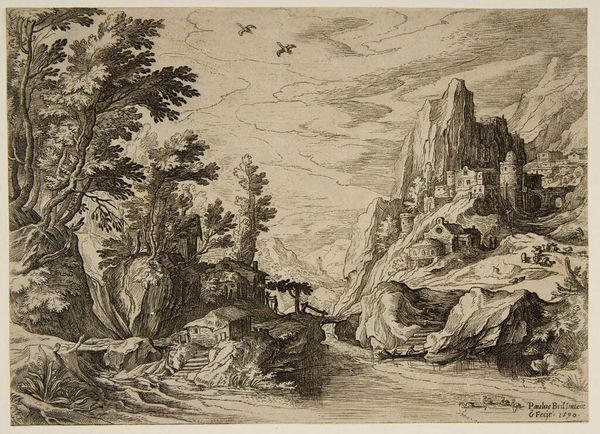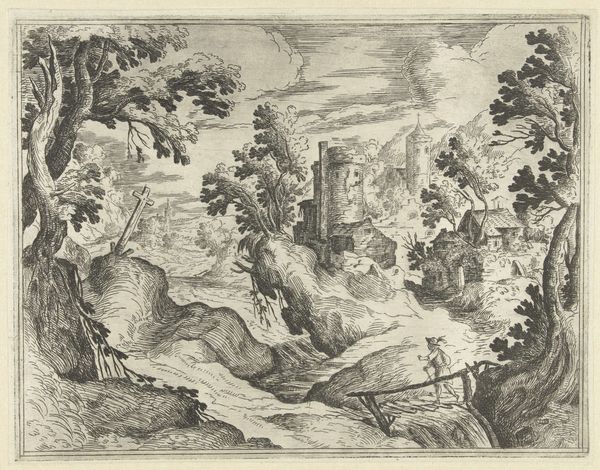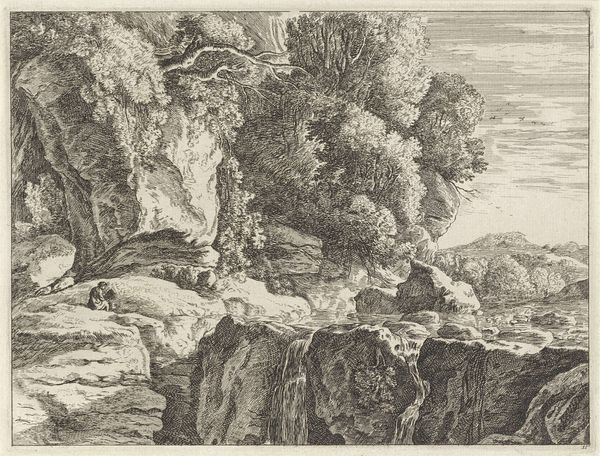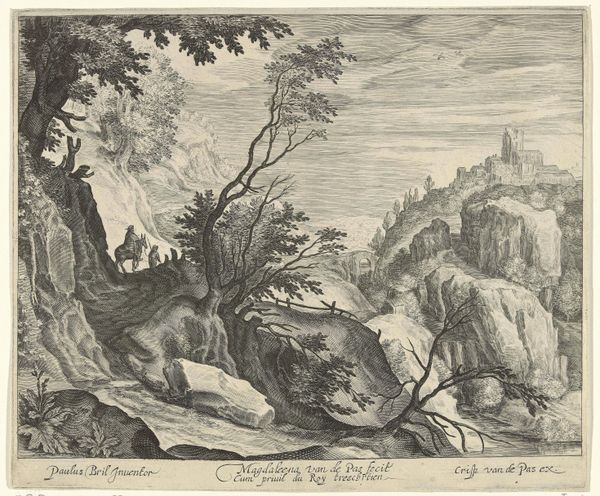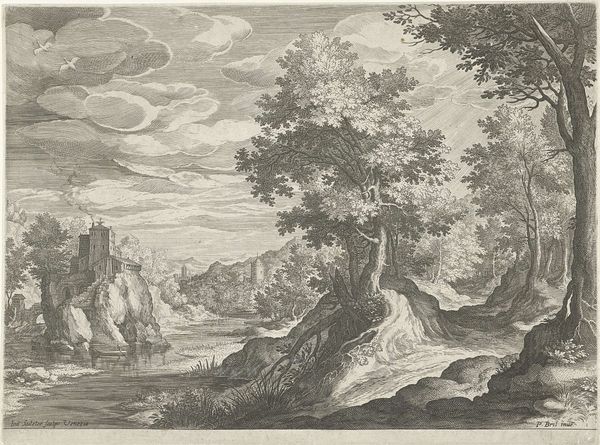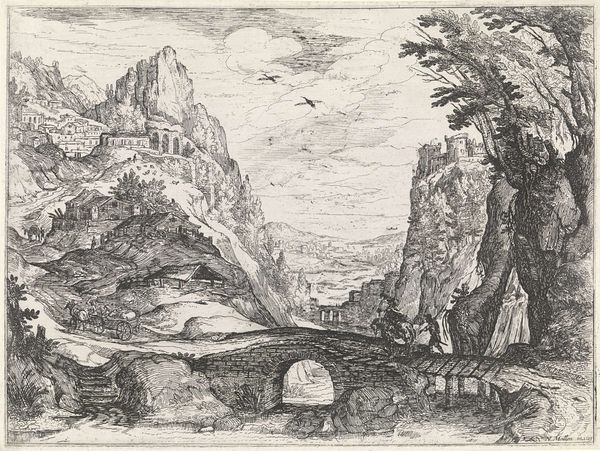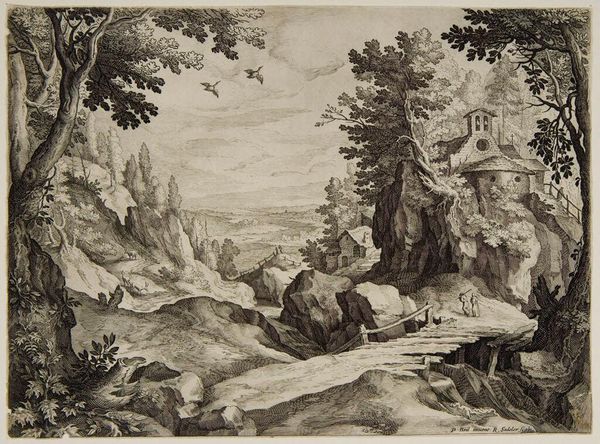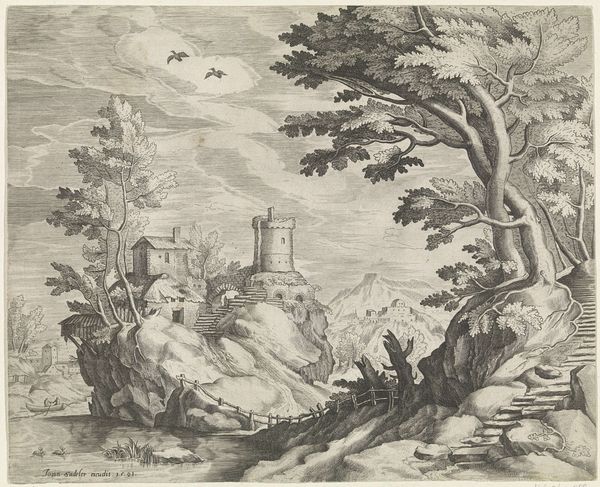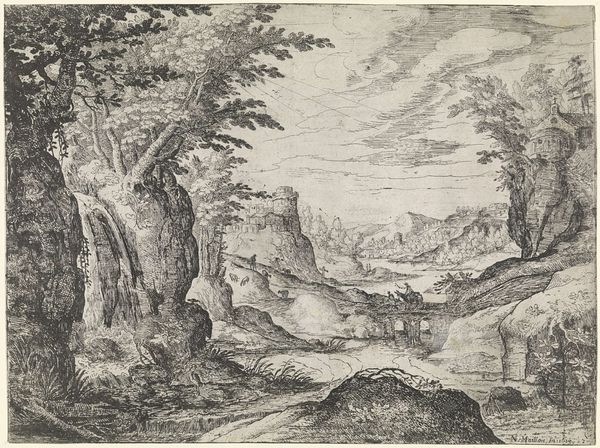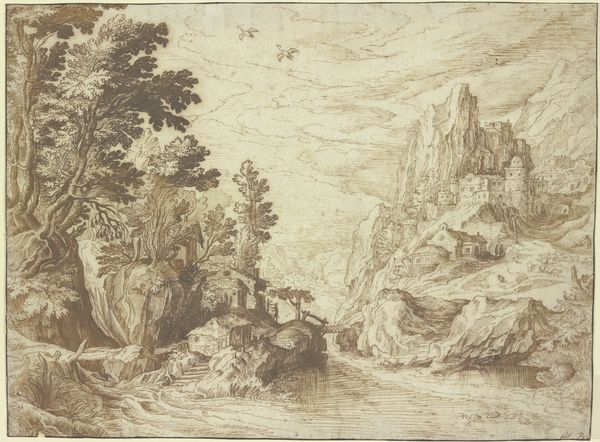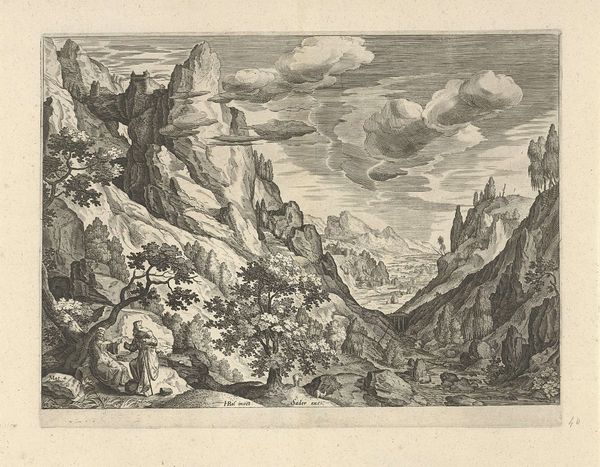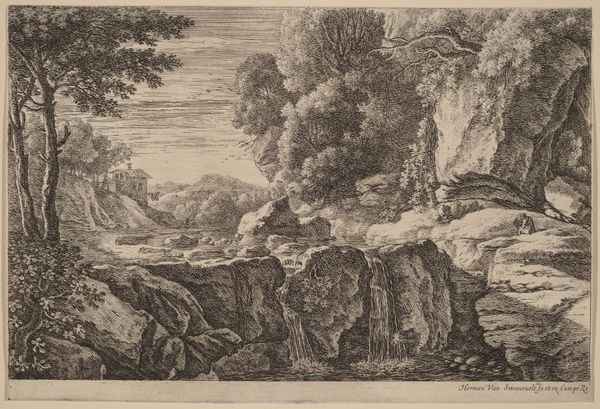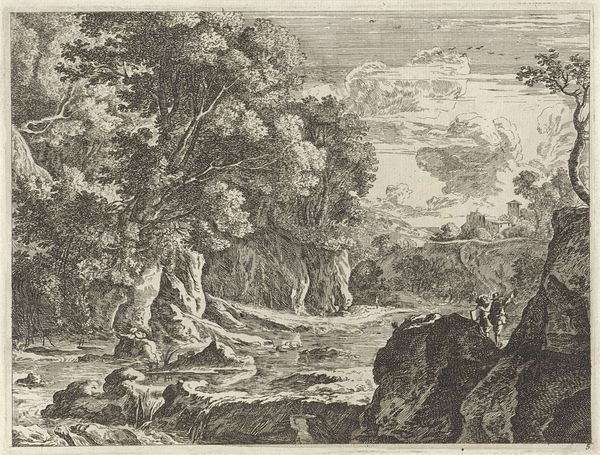
drawing, print, etching, engraving
#
drawing
# print
#
etching
#
landscape
#
mannerism
#
engraving
Dimensions: height 195 mm, width 265 mm
Copyright: Rijks Museum: Open Domain
Editor: We’re looking at “Rocky River Landscape” from around 1580-1600, created by Johann Sadeler I. It's an etching and engraving, and the level of detail is striking! It feels so balanced, almost symmetrical in its composition, despite the ruggedness of the scene. What do you make of its visual structure? Curator: Indeed. The work is governed by a strong underlying structure, primarily the careful arrangements of forms in the image, the lines direct the eye rhythmically through the pictorial space. Notice how the artist uses contrasts – the dark foreground foliage versus the distant, paler mountains – to create depth. Editor: Yes, it’s quite effective! And what about the engraving and etching techniques employed here? It seems incredibly precise for the time. Curator: Precisely. The techniques themselves become significant visual components. The varying densities and directions of the etched and engraved lines don't just represent light and shadow; they actively construct the forms themselves. Editor: I see what you mean. So, it’s not just about *what* is depicted, but *how* it's depicted that gives it meaning? Curator: Exactly. Observe the strategic distribution of light and dark and their function within the image, where the contrasts articulate volume. The organization contributes to the overall artistic meaning. Do you notice, the lack of atmospheric perspective compared to the foreground? Editor: I do now, it feels deliberate. It flattens the space somehow. So much to unpack! Thanks for shedding some light. Curator: My pleasure, such visual analysis often unlocks greater levels of appreciation. The landscape itself becomes an articulation of the artist’s visual strategies, its formal language!
Comments
No comments
Be the first to comment and join the conversation on the ultimate creative platform.
